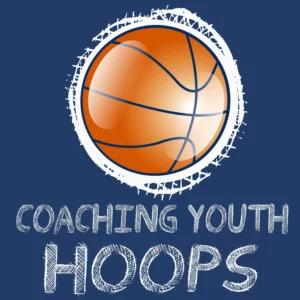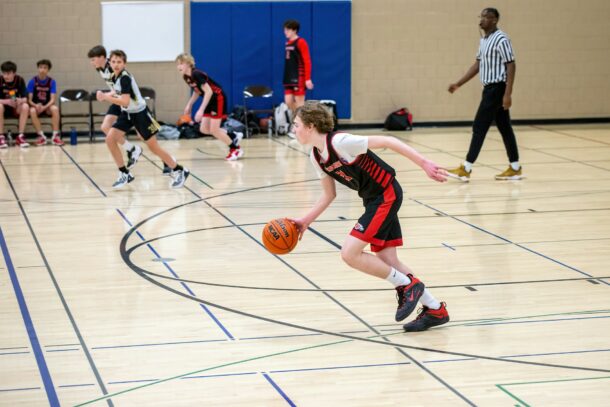Incorporating the right basketball drills for kids makes all the difference for coaches at the youth level. Coaches need to gauge the skill and talent they’re working with, instituting a practice plan to maximize the development of these young players. Finding the right balance for your practice is key. You want your players to practice hard, hone their skills, and become better basketball players. But you also want them to have fun.
Coaching at the youth level takes plenty of patience and positivity. You’ll need to incorporate a fast pace and keep your players occupied and engaged, especially during potentially monotonous skill development drills. Developing focus and fun at practice remains an integral effort for coaches at the youth level of the game.
While there’s no magic formula for practice planning or picking drills, leaning on your experience as a head coach often shows the right path for your players. Here’s a look a some of the best basketball drills for kids.
Basketball Drills for Kids
Developing simple, fun, and effective drills for kids at the youth basketball level might be one of the most difficult parts of the job for any coach. When dealing with beginners, it’s important to layer skill development and not overwhelm the kids with complicated basketball drills. Coaches often zero-in on the basics, which include dribbling, passing, rebounding, and shooting.
Red Light, Green Light Dribbling Drill
Children, especially competitive ones, love the game Red Light, Green Light. This basketball dribbling drills plays off that popular kids game. Assuming you’ve worked with the basic form for dribbling, this game engages the young players on two fronts, control and vision. It teaches players to keep control of the ball while keeping their head up.
The coach stands on one end of the court while the players lineup on the opposite baseline. Each player has a ball and begins dribbling in place. The goal of this drill is to be the first player to make it to the opposite end of the floor while controlling his dribble.
While the original game has someone call out “red light” or “green light,” this version works best if the coach has colored sheets of paper red, green, and yellow. The red paper represents “stop,” which signals the players to control their dribble in place. The green paper represents “go,” which signals a speed dribble forward. The yellow paper can then represent “reverse,” which signals a retreat dribble.
Using the colored papers forces the players to look up at the coach while they’re dribbling. If a player performs the wrong action, they have to return to the baseline.
Knockout
At time-honored tradition before and after practices, Knockout represents more than just a silly, time-killing tradition. For young, competitive players, this drill helps develop quick shooting skills and in-game concentration. Kids learn to shoot under pressure and with a heightened sense of urgency in this basketball drill.
Coaches need two balls to start this drill. Each participating player lines up starting at the free throw stripe, with the first two players holding the balls. The game begins when the first player shoots the ball. The second player then follows with his shot.
What happens next depends upon whether or not the shots drop. If the first shooter makes his free throw, he retrieves the ball and passes to the next person in line. Then he joins the back of the line. If he missed his shot, he must grab the rebound and make a layup before the next shooter makes their attempt. Should the first shooter can make a layup before the second player scores, he’s still in the game. If the second shooter makes a shot before, the first player is eliminated.
Each time a player takes and misses a shot, the next player in line shoots to try to knock them out. Hence the name of the game. The drill continues until only one player remains, the winner.
There are several points of emphasis for this drill. Each player should maintain proper mechanics and form when shooting. Keep your head up and be aware of other players. Coaches can also stress form with layup attempts and return passes.
Passing Tag
Another engaging basketball drill for kids is one called Passing Tag. In this drill, the passers are “it” and try to tag the other team while working off only their pivot foot. Passing Tag incorporates basic passing skills, as well as footwork and communication. Players also learn how to move without the ball.
The set up here can use either the half court or only the space inside the three-point line. Coaches create two teams, the passers and the runners. The passing team should start with only two or three players, whereas everyone else can be a runner. Coaches call for the start of this drill and runners immediately move through the designated space.
Passers look for each other and pass at strategic points. When a player catches the ball, he can pivot to try and tag one of the runners with the ball. If the tag is made, that runner can either be out or added to the passers team.
Points of emphasis for this drill include moving without the ball and making the right pass. Players learn to use their pivot foot and avoid traveling. Coaches can shrink the playing area as the drill continues. Coaches can also add a defensive layer to this drill where the runners can knock or intercept passes for points or to add players back to their team.
Related: Best Basic Passing Drills for Kids
Resources:
Coaching Youth Hoops Podcast Episodes
 5 Things I Wish I Had Known About Coaching Youth Hoops
5 Things I Wish I Had Known About Coaching Youth Hoops
The Skills Needed for K-2 Players
Thoughts on Running A Youth Basketball Camp
Basketball Skills for Grades 3-5
If you found this useful, don’t forget to check out additional blog posts at TeachHoops.com. Also, check out TeachHoops on Facebook, Twitter, Instagram and YouTube.






